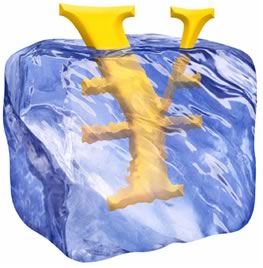
 All
the excitement and allure of overseas work amounts to nothing if you don't
get the negotiated compensation. Here are pointers from the Architect's
Handbook 13th Edition on planning ahead to make sure you have hatched
eggs to count.
All
the excitement and allure of overseas work amounts to nothing if you don't
get the negotiated compensation. Here are pointers from the Architect's
Handbook 13th Edition on planning ahead to make sure you have hatched
eggs to count.
Risks
The legal system—or lack thereof—and prevailing sense of business
custom can mean that foreign clients see little risk in not paying you
and, therefore, that they have no obligation to pay.
An unstable currency may plummet, leaving your negotiated fee inadequate if it is calculated in the foreign currency. And, of course, there is little one can do about sudden political instability.
 Some
countries limit the amount of money you can take out of the country. Some
foreign clients—for instance, in Asia—are used to withholding
payment until all work or each phase of the work is completed satisfactorily.
This, combined with the difficulty of moving currency out of some countries,
can create cash-flow nightmares, such as months-long lags between completion
of work and payment of billings.
Some
countries limit the amount of money you can take out of the country. Some
foreign clients—for instance, in Asia—are used to withholding
payment until all work or each phase of the work is completed satisfactorily.
This, combined with the difficulty of moving currency out of some countries,
can create cash-flow nightmares, such as months-long lags between completion
of work and payment of billings.
Risk management
Retainers that are sufficient to maintain positive cash flow will mitigate
many of the risks of working overseas. Some firms are able to negotiate
full payment in advance. Another option is an escrow account, overseen
by a trusted third party, from which payments are made as the project
proceeds.
 Payment
in U.S. dollars via a bank wire transfer is another viable option. Some
foreign clients choose or are obligated to pay in their jurisdictional
currency as a matter of policy or law. In accounting for the project,
balance the amount of the payment in local currency with on-site expenses,
such as office space, equipment, indigenous workforce, and in-country
living and travel.
Payment
in U.S. dollars via a bank wire transfer is another viable option. Some
foreign clients choose or are obligated to pay in their jurisdictional
currency as a matter of policy or law. In accounting for the project,
balance the amount of the payment in local currency with on-site expenses,
such as office space, equipment, indigenous workforce, and in-country
living and travel.
If you can, buy insurance against currency fluctuations.
Arrange for a secured letter of credit from the client if you are at all in doubt. A client who cannot secure an irrevocable, confirmed, or advised letter of credit—i.e., one that cannot be canceled or is guaranteed by a second bank)—the client's trustworthiness is immediately suspect.
You may be able to get credit risk protection through the U.S. Export-Import Bank. This is an expensive way to protect foreign receivables, but may be the best way for a small firm to protect itself and offer competitive terms, such as 180 days net, to a prospective overseas client.
Copyright 2002 The American Institute of Architects. All rights reserved.
![]()
|
The AIA International Professional Interest Area offers conference proceedings and PIA papers on the MyAIA Portal. The PIA also asks AIA members to respond by Tuesday, March 26, 2002, to a survey on your foreign work. Results will be shared with the United States Trade Representative. Identities of respondents and firms will be held in strictest confidence. Interested in learning more about overseas work? Try the following
AIA eClassroom courses: At the 2002 AIA National Convention and Expo May 9 to 11 in Charlotte, among the hundreds of continuing education offerings, you will find TH04 "Multi-cultural Influences in Global Architecture," a presentation by Leo A. Daly III, FAIA, RIBA. The XXI International Union of Architects Congress will be held in Berlin July 22–26.It is based on four themes—urban societies, innovation and tradition, the built and the natural, and space and identity—under the umbrella theme of "resource architecture." To order your copy of the 2002 Architects Handbook of Professional Practice, 13th Edition, contact the AIA Bookstore, AIA Bookstore: phone: 800-242-3837 option #4; fax 202-626-7519; or send an email. |
|